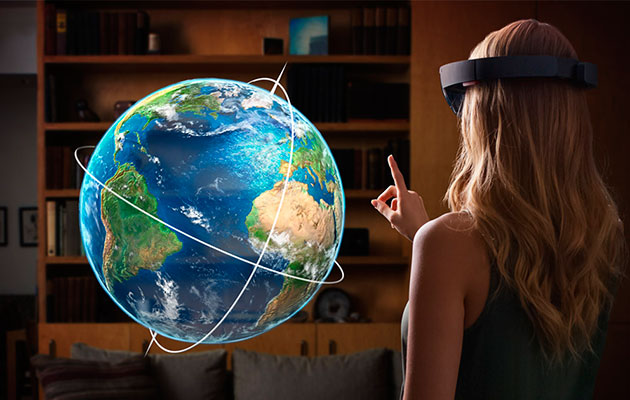We can all agree on how useful it would be to teleport an expert on to the boat from time to time. But might holoportation be nearly as good?
From instructions on how to set the timer on your central heating to replacing a light bulb on your car, there was a time when keeping the manuals for everything in the home was essential. But today there seems little point in keeping printed booklets for anything. If you need to know how to fit a new heater element to a tumble dryer you simply go onto YouTube and find a tutorial. Alternatively, you might contact a friend on one of the many video-conferencing services, such as Skype or FaceTime, for a quick real-time chat on camera to show exactly where and why you are stuck.
Virtual reality for sailors with new specially targeted apps
Modern communications have changed our lives way beyond our original expectations when the mobile phone and the internet first arrived. But as it turns out, the clues to the future were all there.
Back in the 1960s the science fiction series Star Trek had this covered with flip fronted, handheld communicators that, at the time, were considered to be devices of pure fantasy. Today they look dated with only three lights, one button and no video or text capability.
Of course the really big deal was teleportation: standing under a glitter shower and dialling in where you wanted to go. At the touch of a button the characters were able to cover vast distances in seconds. We are still a long way off being able to do that. Yet the technology that allows us to be in two places at once may not be as far-fetched as you think.
Virtual Reality (VR) has already given us the opportunity to experience places that don’t exist in the real world around us, simply by slipping on a special headset. More sophisticated systems can provide an even closer approximation of reality, especially when linked with a simulator. This can be a valuable tool for training: motor racing has had it for years and now America’s Cup teams such as Land Rover BAR and Oracle Team USA both have VR set-ups that allow crews to practice ashore.
But a new system called holoportation could take the virtual world onto another level. It is a development of VR and allows high-quality 3D models of people to be reconstructed, compressed and transmitted anywhere in the world in real time. And when combined with sophisticated display systems such as HoloLens, users can hear, see and react with remote participants as if they were really there with you in the same place.
The system, which has been developed by Microsoft, works by making a sophisticated real-time scan of the person to be transmitted, which is then recreated at the viewer’s location. According to the company, interactions can be stored and played back like a video recording. In addition, the representation of the transported person doesn’t even have to be full size, which means it will be possible to have your friend, colleague or family member walking around on your desk like something out of Alice in Wonderland.
Google Earth navigation: how to sail off the chart with confidence using satellite imagery
It doesn’t take much to see the potential benefits to personal and business life, but imagine how useful this could be aboard our boats. When linked to your virtual boat, virtual coaches, experts and repair specialists could step aboard to show and talk you through all kinds of issues. And when they finish, become boring, or want feeding you could simply switch them off. What’s not to like about that?
But there’s perhaps an even scarier thought for us journalists. In the real world there are already those in the media who are looking at using the technology to take readers and viewers to the very places they are reporting on, using a similar kind of virtual reality. They call it immersive journalism.
So if you’re jealous of the boats that Toby Hodges gets to test, or fancy joining me for a ride on an AC45, holoportation in the future may make this possible. The worrying thought is that if and when it does become a reality, it may not be just equipment manuals that disappear from your bookshelf.




